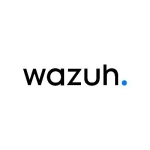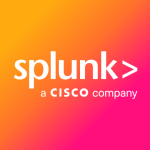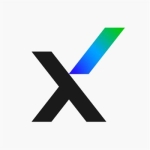What is our primary use case?
We analyze all our authentication traffic in QRadar UBA using the solution's AI module to detect and understand uncommon authentication patterns. There is also the rule logic, but we don't use that much. Instead, we mostly rely on AI to do that. In that respect, I wouldn't say we are using the product to the fullest extent because we only have the AI and what the CM is providing. We have a suite of security products, and QRadar UBA is only one source of information that we rely on.
QRadar UBA collects information on 16,000 employees in the company, including when they log in and out or when they launch applications. We have a team of 10 security analysts who go into the solution to check the alarms. IBM has set the solution up so that we only need to react to the alarms. The UBA will flag it if someone does something weird, and our security team will investigate the anomaly to see if that was valid or malicious.
We are currently on QRoC — short for QRadar for Cloud — so it's the latest and greatest solution. It was originally on a private cloud, but we moved to the public cloud three years ago.
What is most valuable?
It's hard for me to pinpoint any one feature that's most valuable because it is all about consuming logs and analyzing them. We started using QRadar UBA because we needed something that could analyze Linux authentication information. Other products take care of the Windows platform.
What needs improvement?
Better algorithms or AI would always be appreciated, but this product does what it's supposed to do. And maybe there is something behind the scenes that could be improved, but I don't know.
UBA is a plugin for QRadar SIEM. If we're talking about the SIEM solution as a whole, there is a lot I can talk about, but there isn't much to say about UBA as a standalone. I'm not in a position to criticize or comment on the underlying code.
For how long have I used the solution?
I have been using QRadar UBA for six years.
Buyer's Guide
IBM Security QRadar
October 2025
Learn what your peers think about IBM Security QRadar. Get advice and tips from experienced pros sharing their opinions. Updated: October 2025.
872,655 professionals have used our research since 2012.
What do I think about the scalability of the solution?
I haven't had any problems. We have never needed to add more memory or CPU.
How are customer service and support?
IBM technical support is excellent. 10 out of 10. IBM is highly professional when it comes to security support. IBM's support for other types of solutions isn't quite as good, but the security domain is a different world. I've worked with IBM in other areas, and it's different. Security support is on a tier by itself inside IBM.
How would you rate customer service and support?
Which solution did I use previously and why did I switch?
We are also using a Microsoft solution called Azure Advanced Threat Protection. It provides similar UBA features but only for a Microsoft environment. Most UBA products do exactly the same thing. I haven't tried many other solutions besides QRadar, Microsoft, and Splunk.
Splunk is brilliant. It does the same thing, but it's slightly more expensive, so we selected IBM. Microsoft's solution is a little cheaper, but it lacks Linux support currently. There are minor differences, but we went with IBM in this case because it has the best support.
How was the initial setup?
IBM did the setup. I called them to ask for UBA, and it was available the next day. They handled all the deployment and maintenance.
What about the implementation team?
What was our ROI?
I have not calculated ROI for this product. QRadar UBA is a tiny part of the entire security portfolio. In the context of the SIEM as a whole, the cost is so low that it's hard to defend not doing it.
What's my experience with pricing, setup cost, and licensing?
I have no idea what QRadar UBA costs as a standalone solution because it is bundled with the QRoC security operation center and several other modules that we pay for in a big lump sum. However, I don't think that part is too expensive. It's a plugin to the QRadar SIEM that feeds off the same data. We have X-Force Threat Exchange, so IBM is operating the SIEM for us. I say to them, "I want UBA," and there it is.
What other advice do I have?
I rate QRadar UBA eight out of 10. It's a small product doing exactly what it's supposed to do as an integrated part of our SIEM. It looks good and works well. I don't give it a 10 because it is something we have to request. I would love it if UBA was included out of the box like Microsoft.
Regardless of which solution you use, I recommend user behavior analytics. It provides valuable information to the security team. It doesn't matter whether you use Splunk or Microsoft— you should use a UBA solution.
We will probably stick with QRadar for the foreseeable future. It depends on the developments in the SIEM market. We will probably continue with IBM because changing SIEM is not something you do lightly. As long as we keep the IBM SIEM, we will continue to use QRadar UBA.
Disclosure: My company does not have a business relationship with this vendor other than being a customer.





















